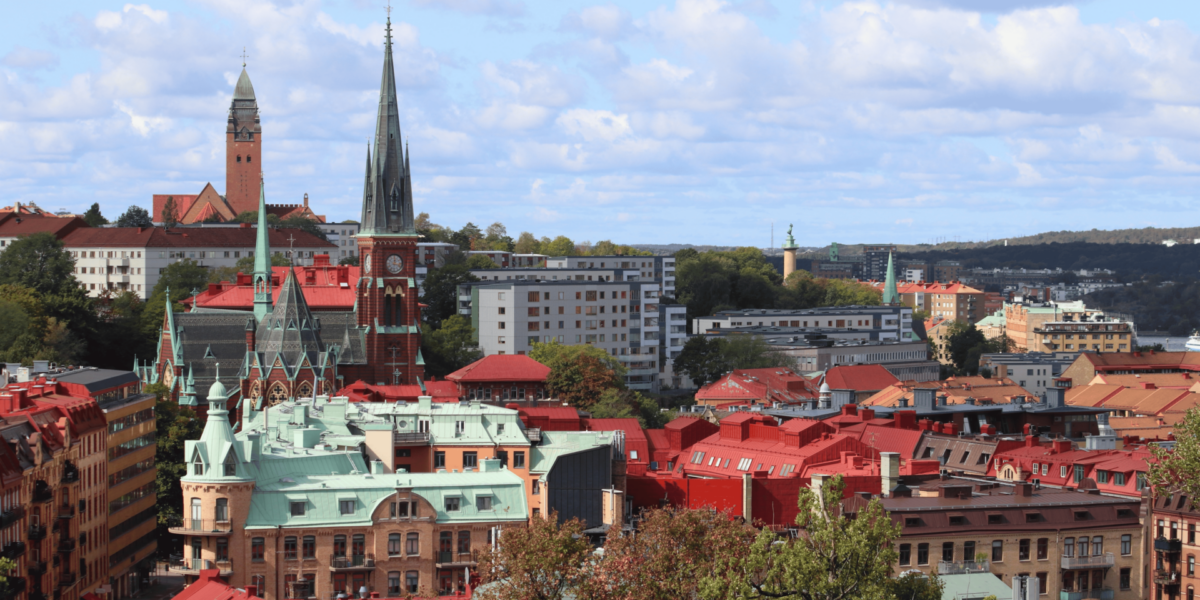Architecture Defines Daily Life in Kviberg
Kviberg’s development is not just about buildings—it’s about how those buildings influence the way people live, interact, and move through the neighborhood.
In Kviberg, architecture guides behavior. Residential structures are designed with shared courtyards, clear sightlines, and direct access to public spaces. These features encourage residents to engage with each other. A person leaving their home walks past green space, meets a neighbor, and continues toward transit or a shop. The layout supports casual interaction while maintaining privacy.
Mixed-Use Design Strengthens Community Ties
Buildings in Kviberg often serve more than one function. Mixed-use structures combine living, working, and leisure in one place, reducing the need for travel and promoting local connection.
A resident might live above a bakery, with a clinic and coworking space nearby. They interact with the same people daily—on the way to work, during errands, or in shared outdoor areas. This constant movement within a compact zone creates stronger neighborhood identity. When spaces offer multiple uses, community ties form naturally.
Public Spaces Encourage Connection
The layout of Kviberg includes strategically placed public areas that support informal gatherings, outdoor activities, and cultural exchange.
Open spaces like small parks, seating areas, and walking trails are not added as afterthoughts—they are integrated into the planning. A group of children plays in a shared courtyard while adults talk nearby. These shared spaces are within walking distance of most homes, reducing isolation and making the outdoors an extension of private life. Architecture creates opportunities for spontaneous, low-pressure social contact.
Building Placement Promotes Safety and Comfort
Kviberg’s architectural design emphasizes safety without relying on barriers. Sightlines, lighting, and entry placements help residents feel secure while remaining part of the larger community.
Apartments face pedestrian walkways, not parking lots. Entrances are well-lit and visible from multiple directions. These decisions deter unwanted activity and make streets feel safer. A person walking home at dusk sees open windows, familiar faces, and lit pathways. This visibility contributes to a sense of comfort and belonging.
Density Supports Walkability and Local Access
Kviberg’s medium-density layout allows for compact development without crowding. This balance creates a walkable neighborhood where services, transport, and recreation are within reach.
A person doesn’t need a car to go about their day. They can walk to the tram, pick up groceries, visit a gym, or meet friends—all within a few blocks. Buildings are placed close enough to support local commerce but spaced to preserve airflow and light. This thoughtful approach to density helps build a sustainable and livable environment.
Design Prioritizes Nature Integration
Kviberg’s architecture incorporates natural elements, making greenery a visible and accessible part of the community. The buildings, paths, and green zones work together rather than competing for space.
A resident opens their window to views of trees and trails. Rooftop gardens and green facades reduce heat and add visual interest. Buildings follow the land’s contours, avoiding harsh cuts or excessive leveling. Nature isn’t fenced off—it flows between and around structures. This integration fosters mental well-being and encourages outdoor activity.
Shared Amenities Reinforce Social Networks
Kviberg features shared amenities—laundry rooms, rooftop terraces, bicycle storage, and even co-living lounges—that support collective use without sacrificing individual privacy.
A family uses a community kitchen for a gathering, while another resident hosts a reading group on the terrace. These spaces offer functionality and social value. By placing shared resources within easy reach, architecture builds habits of cooperation and informal support. The design encourages residents to use their surroundings, not just live in them.
Educational and Cultural Buildings Add Social Value
Kviberg’s schools, libraries, and cultural centers are not isolated structures—they are woven into the residential fabric. Their locations and designs invite use by all age groups.
A student walks from their home to a nearby learning center without crossing major roads. After school, they visit the community library connected to a public square. These institutions anchor the neighborhood and create daily routines for families. Architecture ensures these facilities are visible, accessible, and welcoming to residents of all backgrounds.
Transit-Oriented Design Reduces Barriers
Kviberg’s architecture aligns with public transit routes, placing homes, businesses, and services within walking distance of tram stops and bike paths.
A commuter reaches a tram station in minutes. Bike racks sit at every key location. The design makes it easier to choose low-impact travel and stay connected to the wider city. Structures near transit zones support small businesses and higher foot traffic, increasing safety and economic activity. Transit-oriented architecture turns mobility into part of the community experience.
Quiet Zones and Private Spaces Respect Boundaries
Kviberg’s community-minded design doesn’t neglect privacy. Architecture includes buffer zones, sound-dampening layouts, and unit designs that respect personal space.
Apartments are arranged to reduce direct sightlines into living areas. Shared walls are reinforced to reduce noise. Outdoor areas include quiet corners for rest or solitude. These elements let residents recharge without leaving the neighborhood. The design recognizes that community strength depends on the ability to retreat as well as connect.
Architecture Guides the Future of Kviberg Living
Kviberg continues to evolve, but its architectural principles remain clear: support community, protect nature, and make life easier for everyone.
Every new structure follows guidelines that prioritize accessibility, social interaction, and energy efficiency. Architecture in Kviberg doesn’t impose—it invites. It builds trust between neighbors and offers space for both routine and change. Through careful design, the built environment shapes a neighborhood where people don’t just live close—they live connected.
